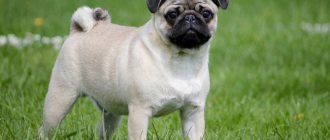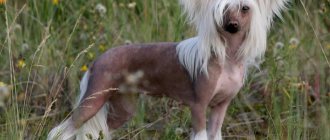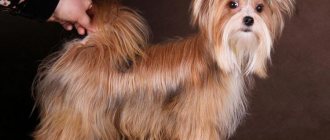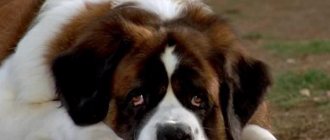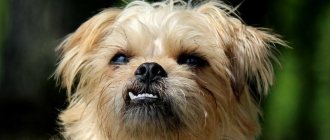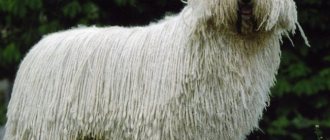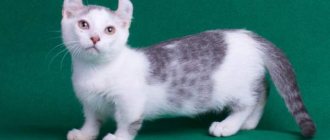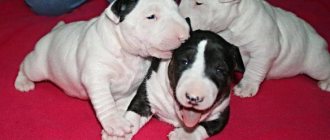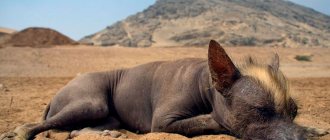Akita Inu
Often called the “silent hunter,” the Akita Inu is the largest of the Japanese Spitz breeds. This is a calm but temperamental dog that is not always easy to train. However, the Akita is known for its loyalty, because representatives of this breed have long been faithful guard and hunting dogs.
Like many fox-like dogs, the Akita requires daily exercise. Both the Japanese and American Akita are varieties of the same breed, but with different colors.
Shiba Inu
The Shiba Inu is an affectionate breed that is devoted to its family. However, these pets may not relate well to other people or pets. This is the smallest of all Japanese breeds.
Historically bred for hunting, the Shiba Inu is a dog of Japanese origin, a member of the Spitz family. The Shiba Inu is known to be an independent and intelligent breed. These pets are quite difficult to train and may develop behavioral problems ranging from possessiveness to aggression. The Shiba Inu is considered an extremely fast dog when it comes to chasing small animals.
Dog breeds that look like foxes
An extraordinary intelligence and a beautiful red coat - this is, perhaps, a brief description of a wild animal, the resemblance to which is clearly noticeable in some four-legged pets. There is nothing surprising in this: both the dog and the fox belong to the same canine family . They are common in almost all climatic latitudes. Despite the genetic differences between the two species, dog breeders have created a dozen breeds with a fox-like appearance.
Among them there are decorative dogs, ready to play all day long. No less interesting are human assistants designed for hunting, transporting goods or herding livestock. The rest are just companions who love to spend time in the company of the owner and his family.
The main features of such dogs:
Although the appearance of a domestic dog rarely combines all the features of a cunning red animal, fox-like manners can also manifest itself in its character.
Pembroke Welsh Corgi
High erect ears give the shepherd breed a resemblance to a red “beast”.
The short-legged dog has a “fox” head shape
Sheltie
Both the structure of the muzzle and the long fluffy tail of this shepherd dog seem to be borrowed from a fox.
The fluffy dog resembles a fox due to its narrow and long muzzle, as well as its coat color.
Shiba Inu
A dog from Japan in appearance and the density of its fur resembles an agile predator.
Shiba Inu is similar to the steppe variety of fox - corsac
Pomeranian Spitz
A small nimble dog with a sly face, like a fox cub, will not leave you indifferent.
Dwarf Pomeranian Spitz - fox in puppy form
Keeshond
A dog from the northern latitudes with dark fur and a black muzzle looks like a game animal - the silver fox.
The eyes and muzzle of the Keeshond are the same as those of the silver-black fox
Collie
This large dog has a head shape, a shaggy white “collar” and the dark edging of the edges of the ears as if copied from a fox “portrait”.
A collie's white-tipped tail is similar to a fox's.
Norwegian Elkhound
The pointed ears of the sled breed from Norway are no different from those of the fur-bearing silver-black rogue.
The black ears of the Norwegian Elkhound are the same as those of the Canadian northern fox.
Longhaired Chihuahua
The attentive beady eyes and huge locator ears of this lap dog seem to have been borrowed from the fennec fox, a miniature inhabitant of the African deserts.
The tiny dog resembles a small African fennec fox
American Eskimo dog
All the beauty of the wild inhabitant of the Arctic seemed to be reincarnated in the image of a white dog.
The snow-white pet looks like an arctic fox or polar fox
Finnish Spitz
Thanks to its pointed ears and slender, thin paws, you can easily confuse a “fiery” dog with a forest predator.
The red hunting husky from Scandinavia resembles a fox in color, paw and head shape.
By the way, a cross between two different breeds with a red coat color also leads to the birth of a pet that looks like a fox. For example, toy terrier and spitz. But it seems to me that the Pomsky mestizo, obtained from crossing a Siberian Husky with a Pomeranian Spitz, still deserves the palm. It bears a much greater resemblance to the common fox. Compare for yourself: bright red fur, protruding ears, light throat and chin, fluffy tail and fast paws. Here you have “brother fox”, and not from a fairy tale, but in reality.
Video: red Pomsky on a walk
When comparing the appearance of a dog with the appearance of a forest dweller, remember that each four-legged friend has its own character and keeping characteristics. Take it seriously, then you will become friends. And passers-by, looking with envy at the furry fidget, will often ask where to buy such a cute “fox”.
Source
American Eskimo dog
This beautiful white dog breed is one of the most affectionate and friendly. Outwardly, it resembles Arctic foxes. It is also known that the American Eskimo dog is a protector and faithful watchman for its family members. Dogs of this breed love playing outdoors, although their luxurious, thick coat requires careful grooming.
Samoyed dog
The Samoyed is another Spitz breed that originated from Siberia. These strong, intelligent dogs were historically bred to pull sleds on polar expeditions. However, today they have become affectionate and playful pets. A feature of Samoyeds is also their tendency to chase small animals.
Schipperke
Another very active breed, the Schipperke is independent and brave, but tends to bark a lot. Originally developed in Belgium, the Schipperke breed is also known as the "little captain".
The Schipperke looks like a small black fox. This breed loves to be involved in daily activities and enjoys outdoor exercise with its family. Also keep in mind that the Schipperke loves to chase small animals.
Fox (fox): description, characteristics, photo
Depending on the species, the size of the fox varies from 18 cm (for the fennec) to 90 cm, and the weight of the fox ranges from 0.7 kg (for the fennec) to 10 kg. Foxes have a characteristic generic feature - a slender, elongated body with rather short limbs, a slightly elongated muzzle and tail.
The fox's fluffy tail serves as a kind of stabilizer while running, and in winter cold it is used for additional protection from frost.
The length of a fox's tail depends on the species. In the fennec fox it reaches 20-30 cm. The length of the common fox's tail is 40-60 cm.
Foxes rely more on touch and smell than sight. They have a sensitive sense of smell and excellent hearing.
Their ears are quite large, triangular, slightly elongated, with a sharp tip. The largest ears are those of the fennec fox (up to 15 cm in height) and the bat-eared fox (up to 13 cm in height).
Fox with big ears (fennec fox)
The vision of animals, adapted for a nocturnal lifestyle, allows representatives of the genus to respond perfectly to movement, however, the structure of the fox's eye with vertical pupils is not adapted for color recognition.
A fox has a total of 42 teeth, except for the bat-eared fox, which grows 48 teeth.
The density and length of the hair of these predators depends on the time of year and climatic conditions. In winter and in areas with harsh weather conditions, the fox's fur becomes thick and lush; in summer, the lushness and length of the fur decreases.
The color of a fox can be sandy, red, yellowish, brown with black or white markings. In some species, the fur color can be almost white or black-brown. In northern latitudes, foxes are larger and have a lighter color; in southern countries, the color of the fox is duller, and the size of the animal is smaller.
When chasing a victim or in case of danger, a fox can reach speeds of up to 50 km/h. During the mating season, foxes may make barking sounds.
The lifespan of a fox in natural conditions ranges from 3 to 10 years, but in captivity the fox lives up to 25 years of age.
Finnish Spitz
Photo: Karelgerda/Wikimedia Commons
The Finnish Spitz, often called the Karelian-Finnish Laika, is a very energetic and active breed that requires significant daily exercise for physical and mental development. Although the Finnish Spitz can make a loving family pet, the breed is prone to barking loudly when bored.
Norwegian Gray Elkhound
Photo: ChildofMidnight at English Wikipedia
The Norwegian Gray Elkhound is a hunting dog breed, but also belongs to the Spitz group. This is a playful dog, but at the same time it is a good guard and a loyal pet. The Norwegian Gray Elkhound needs to be socialized with people. Therefore, during prolonged separation and loneliness, the dog may develop behavioral problems. Despite their small stature, the Norwegian Gray Elkhound is an extremely energetic breed that requires daily exercise.
What to remember when choosing dogs
To choose the right pet that looks like a fox, it is recommended to consider who exactly is needed: a plush toy, a watchman or an equal comrade. First, it is advisable to learn about the pros and cons of the dog’s character. Size will also matter, especially if the pet will be kept indoors.
Do not forget that such dogs require strict training. If you do not provide your puppy with regular exercise, there is a risk of getting an uncontrollable adult dog.
If you like wild animals, getting a fox dog would be a good decision. In the variety offered, everyone will find their own breed.
Fox is a generalized name for several species of mammals in the large canid family (Canidae). Twelve species of this group belong to the genus of foxes proper (true foxes), but some other species are also called foxes. Occupying different continents, all 23 species of foxes presented below have a characteristic appearance and a similar lifestyle, but at the same time, each species has its own characteristics.
The fox is a predator with a sharp muzzle, a narrow and somewhat flattened head, rather large ears and a long fluffy tail. From early childhood, we have all been familiar with the red-haired, thieving rogue - the heroine of many fairy tales and fables, who always manages to get around her relative - the wolf. Obviously, the cunning of the fox in the tales of many cultures reflects the plasticity of the species and its wide distribution. Indeed, foxes are very unpretentious to the environment, they know how to adapt well and have been able to settle quite comfortably on almost all continents, with the exception of Antarctica.
There are 3 separate branches of "fox-like" canids. The closest of them to the common ancestors are 2 species of gray foxes (Urucyon). The age of this genus is 4-6 million years. And although they are phenotypically similar to foxes of the genus Vulpes, they are not genetically related to them. The big-eared fox (Otocyon) is also an ancient species of canid, which is genetically and morphologically separated from all other foxes (age of the genus is 3 million years). These species make up the first branch.
The second branch is the species of the genus Vulpes (common foxes). This branch is divided into 2 parts - the common fox type and the fennec type. The fennec fox and the Afghan fox represent the result of an ancient divergence (4.5 million years). The branch comprising the species of the common fox group includes the American corsac and arctic fox, the American fox, as well as many of the Old World species. They diverged only recently (0.5 million years) and form a separate subgroup within the common fox phylum.
The third branch consists of all South American species. This branch stands closer to the genus Caris (Wolves) than to other foxes. The little fox and Maikong are the ancestral forms of this group (age 3 million years); most other Dusicyon species arose relatively recently (1.0-2.5 million years ago).
German Spitz
This breed makes an excellent companion due to its friendly and affectionate nature. The German Spitz is also loyal to its family and gets along well with children. It is an excellent watchdog as well as an intelligent pet that learns quickly and requires plenty of exercise.
Other breeds similar to foxes
Bear dog: a breed similar to a bear cub
There are other breeds that resemble red-haired forest dwellers:
- Spitz (Finnish, Pomeranian and German);
- Schipperke;
- Norwegian Elkhound;
- Welsh Corgi.
Schipperke
The black fox dog of the Schipperke breed was bred in Belgium and was originally used as a herding dog and for hunting rodents in barns and shops. These small shepherd dogs were considered good watchdogs. Now it is more of an ornamental breed.
Schipperke
The dogs are small, weighing no more than 9 kg. Height at the withers is from 28 to 32 cm. The color is exclusively black, the undercoat is thick, the guard hair is hard. The muzzle resembles that of a shepherd and a fox at the same time, the eyes are dark. The back is straight and strong, the paws resemble those of a cat with tightly pressed toes, the tail can be curled into a “donut” or hang down.
Schipperkes are not sofa decorations; they are active and inquisitive pets. The owner must be a partner in all games. Such dogs are not suitable for very young children; they will not allow themselves to be “squeezed.” They are also not suitable for the role of a nanny.
The owner must be very experienced; the Schipperke will more than once try to take the place of leader in the “pack”. At the same time, Schipperkes perfectly master even a complex training course. The Schipper just needs exercise, otherwise the dog will conflict with other pets, bully other dogs on a walk and attack guests. The dog needs to be constantly occupied, otherwise it will actively participate in the owner’s affairs.
Note! An ill-mannered pet can show aggression towards the owner and his family.
Norwegian Elkhound
One of the symbols of Norway, the Elkhound is not quite a fox dog. Its other name is moose husky, so representatives of this breed are more like wolves. The color contains different shades of gray. The tips of the hairs are always dark.
The breed is ancient; the remains of Elkhounds have been found in Viking graves. Such dogs were used to hunt big game: moose, wolves, lynxes, bears. The character of Elkhounds is truly canine: they are loyal, friendly and affectionate pets with children. The Elkhound is a good watchdog, distrustful of strangers.
But there are also disadvantages. Dogs are noisy, without training they can be aggressive towards other animals and strive to control their owner. They often make independent decisions. Suitable exclusively for experienced and active owners.
Elkhounds are medium in size, weighing on average 22-25 kg, 49 cm is the average height of an Elkhound at the withers.
Norwegian Elkhound
Pomeranian Spitz
Another small red dog that looks like a fox is the Pomeranian Spitz. These pets are very small, weighing up to 2 kg and height at the withers up to 22 cm. At the same time, their fearlessness does not correspond to their size; fluffy “oranges” will protect their owner to the last.
It takes a lot of time to care for fluffy red fur. Despite the fact that the dogs are decorative, they will not serve as decoration for the sofa. Pomeranians are constantly on the move and love active games and long walks. The Pomeranian Spitz does not have enough patience for small children, so if you have them, it is better not to get such a dog.
Note! A fox dog can easily train a weak-willed owner as needed. Therefore, Pomeranians are recommended for experienced dog breeders.
Pomeranian Spitz Filbert Mitch Boniface (Filka) – champion of Russia
Little German Spitz
The Small German Spitz is larger than the Pomeranian, reaching 28 cm at the withers. Average weight is 4-6 kg. During the molting period, the fluffy long coat needs to be constantly combed, at least once a day. The color can be different, including fox-red. The muzzle is pointed, the eyes and nose are dark, the ears are erect, the tail is ringed.
They are active and love to walk, but in bad weather they will be satisfied with the cat litter box. Most dog handlers do not classify these dogs as a separate breed, believing that they are one and the same with Pomeranians. But there are differences not only in size, but also in color, coat and tail shape.
Small German Spitz
Finnish Spitz are the most stubborn foxes
The second name for the Finnish Spitz is Karelian-Finnish Laika. They are excellent hunters and watchdogs. Height reaches half a meter at the withers. Average weight – 11-13 kg.
The muzzle is very similar to a fox, the nose is dark, the eyes are slanted and brown. The ears are set high and pointed. The coat is hard, quite long, and only variations in red color are allowed:
- dark orange;
- reddish red;
- red and gold.
Like many huskies, they do not tolerate heat well. The coat requires little grooming.
Finnish Spitz
Finnish Spitz are playful, but flexible, and can become a good nanny for the owner's child. They are very active and without energy output they can damage things in the house. Due to their hunting purpose, these dogs bark very loudly and it is important to teach the animal from puppyhood not to make unnecessary noise.
Welsh Corgis are small but smart animals
Cartoon Welsh Corgis are one of the most fashionable breeds. This little shepherd is infinitely loyal to its owner and adores children, never showing aggression even towards the most annoying of them.
Corgis are playful and affectionate, and cannot easily tolerate their owner’s inattention. Due to short paws, there are problems with the spine. These dogs should not jump from heights or walk a lot on stairs. Ideally, you need an orthopedic bedding; a Welsh Corgi cannot sleep on something that is too soft. Weight reaches 13 kg, height – 30 cm. Average life expectancy is 9-11 years.
Welsh Corgi
There are many breeds that resemble a fox: Akita and Shiba Inu, various Spitz, Corgi, Schipperke, Ecklehound. Despite their similar appearance, all these dogs have different personalities and maintenance requirements. Therefore, before getting such a pet, you need to study all the characteristics of the breed.
Alaskan Klee Kai
The Alaskan Klee Kai breed originated in the 1970s as a smaller version of the Husky. This intelligent, playful and extremely energetic dog makes a wonderful and loyal pet. The Alaskan Klee Kai loves its family members, but will be more wary of strangers. Although these dogs can be found in a variety of colors, the rare red and white Alaskan Klee Kai bears a striking resemblance to the red fox.
Fox: description, structure, characteristics. What does a fox look like?
The fox is a predatory mammal that belongs to the canine family, that is, it is a distant relative of both the wolf and the domestic dog.
The size of a fox depends on its species and varies from 18 cm (for the smallest fox - fennec fox) to 90 cm. The weight of the fox also varies - from 0.7 to 10 kg. All foxes are distinguished by a special generic characteristic - an elongated muzzle, an elongated body, but with short limbs.
And every decent fox has a fluffy tail. This fluffy fox tail was not only created for beauty by nature, but also serves practical purposes: it acts as a stabilizer during running, and in the winter cold it can additionally warm its owner. The length of a fox's tail depends on its species, on average it is 40-60 cm.
The fox's hearing and sense of smell are well developed; these animals primarily rely on them during the hunt. As for vision, it is also well developed, moreover, it is adapted for a nocturnal lifestyle and allows you to see well in the dark. But the only drawback of a fox's vision is that it is not able to recognize colors. A fox has 42 teeth in its mouth, with the exception of the big-eared fox, which has as many as 48 teeth.
The fox's body is covered with red hair, the thickness of this hair depends on the type of fox and its habitat, and can also vary depending on the time of year. So, for example, in foxes living in harsh northern conditions, the fur becomes thick and lush in the winter, but in the summer the lushness of the fox’s fur decreases.
Poulin
Photo: Jozefsu/Wikimedia Commons
The Pulin is a black breed of dog, very similar to a fox, native to the Vojvodina region of Serbia. This is a loving and loyal pet, but it requires a lot of different exercises for both physical and mental health.
Didn't find what you were looking for? Use the site search form
Fox at home: maintenance and care
Keeping a domestic fox in a house or apartment is possible, but to do this you need to follow a number of rules. It is imperative to find a good veterinarian who will periodically monitor the health of your pet. The cage for a fox should be spacious so that the animal can make a kind of lair in it. In addition, it should be arranged in such a way that it is easy to clean. It is necessary to put a drinking bowl in the cage so that the animal does not feel thirsty. If the territory of a country house allows, then you can arrange a large indoor enclosure with a booth for your domestic fox. The net should be buried almost a meter into the ground so that the cunning pet does not dig under the ground and run away.
To prevent the fox from getting bored, you must play with it and train it - a domestic fox quickly becomes attached to its owners, so it does it with pleasure. However, one should not resort to aggressive games, because even a tamed animal can cross the line and bite or scratch the owner. The best option would be to use an arsenal of “typical cat fun” rather than canine ones.
During the summer, foxes emit a strong and rather unpleasant odor, so it is recommended to bathe your domestic fox at least once every two weeks.
